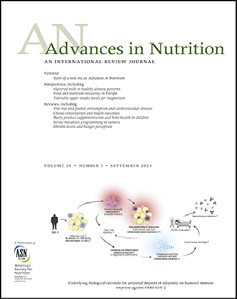Abstract: Food fortification with micronutrients is widely implemented to reduce micronutrient deficiencies and related outcomes. Although many factors affect the success of fortification programs, high population coverage is needed to have a public health impact. We aimed to provide recent global coverage estimates of salt, wheat flour, vegetable oil, maize flour, rice, and sugar among countries with mandatory fortification legislation. The indicators were the proportion of households consuming the: food, fortifiable food (that is, industrially processed), fortified food (to any extent), and adequately fortified food (according to national or international standards). We estimated the number of in-dividuals reached with fortified foods. We systematically retrieved and reviewed all applicable evidence from: published reports and articles from January 2010 to August 2021, survey lists/databases from key organizations, and reports/literature received from key informants. We analyzed data with R statistical package using random-effects meta-analysis models. An estimated 94.4% of households consumed salt, 78.4% consumed fortified salt (4.2 billion people), and 48.6% consumed adequately fortified salt in 64, 84, and 31 countries, respectively. Additionally, 77.4% of households consumed wheat flour, 61.6% consumed fortifiable wheat flour, and 47.1% consumed fortified wheat flour (66.2 million people) in 15, 8, and 10 countries, respectively, and 87.0% consumed vegetable oil, 86.7% consumed fortifiable oil, and 40.1% consumed fortified oil (123.9 million people) in 10, 7, and 5 countries, respectively. Data on adequately fortified wheat flour and vegetable oil and coverage indicators for maize flour, rice, and sugar were limited. There are major data gaps on fortification coverage for most foods except salt. All countries with mandatory fortification programs should generate and use more coverage data to assess program performance and adjust programs as needed to realize their potential to reduce micronutrient deficiencies (PROSPERO CRD42021269364).
Keywords: fortification, coverage, salt, maize, wheat flour, sugar, rice, vegetable oil
F. Rohner et al.
Introduction
Globally, 1 in 2 preschool-aged children and 2 in 3 women of reproductive age are affected by 1 micronutrient deficiency [1]. Micronutrient deficiencies can have considerable negative consequences on an individual’s survival and mental and phys-ical development, which in turn negatively affects the economies of countries as a whole [2,3]. Micronutrient deficiencies can be caused by low micronutrient intake due to a lack of dietary di-versity, suboptimal absorption, and/or increased micronutrient losses due to infections [4].
Food fortification, or the addition of micronutrients lacking in a population’s diet to commonly consumed foods at the point of processing, is a widely used and sustainable approach to increasing micronutrient intakes at a large scale [5]. It has been shown to reduce micronutrient deficiencies and improve func-tional outcomes, such as reduced odds of developing anemia, goiter, or neural tube defects [6]. Food fortification first began in the early 1900s with the parboiling of rice in the Philippines [7]. This was followed in the 1920s with the addition of iodine to salt in Switzerland and the United States [8]. Subsequently, other micronutrients were added to cereals and milk in the United States and Canada [9,10]. It then expanded to sugar in Latin America in the 1970s, salt globally in the 1990s [11], and other staple foods and condiments in Africa and Asia in the 2000s [12].
Although many factors affect the success of food fortification programs [13], high population coverage is needed to have a public health impact. To understand the extent to which fortified foods are reaching a meaningful proportion of the population and in amounts that are sufficient to shift the distribution of micronutrient intakes toward adequacy, it is ideal to track changes in population-level coverage and consumption patterns of fortified foods at regular intervals throughout the imple-mentation of a fortification program [13]. Such assessments should collect information on key indicators that provide evi-dence of delivery effectiveness and identify potential program-matic bottlenecks. Different measures of coverage specificto food fortification programs that serve this purpose have been previously defined and collected in several countries [14,15].
Despite the advantages of tracking coverage, this information is not routinely collected for most fortified foods [16]. Globally, Demographic Health Surveys (DHS) and UNICEF’s Multiple In-dicator Cluster Surveys (MICS) regularly collect information on the household coverage of fortified salt but not of other commonly-fortified staple foods [17,18]. Other surveys that assess coverage of multiple fortified foods at national- or sub-national levels, such as Fortification Assessment Coverage Toolkit (FACT) surveys [19], have been conducted sporadically in several countries [14,15]. Although some efforts have been made to consolidate the findings from FACT surveys across countries to understand common programmatic bottlenecks [16], a comprehensive assessment of all available coverage data has not yet been conducted to our knowledge.
In this systematic review we provide coverage and population reach estimates of 6 widely fortified foods (that is, salt, wheat flour, vegetable oil, maize flour, rice, and sugar) in countries with mandatory food fortification legislation. To assess the per-formance of food fortification programs in different contexts, we aimed to estimate coverage and reach for the aforementioned foods by geographic region, country-level income classification, residence (that is, urban/rural), and subnational socioeconomic status. Finally, we aimed to identify country-level factors that enable and limit the coverage of fortified foods.






























